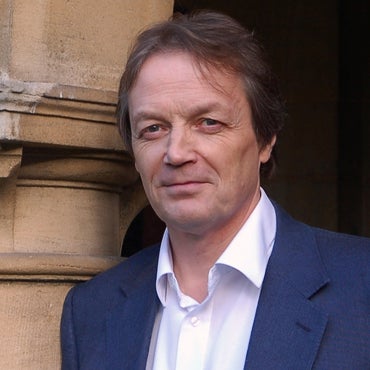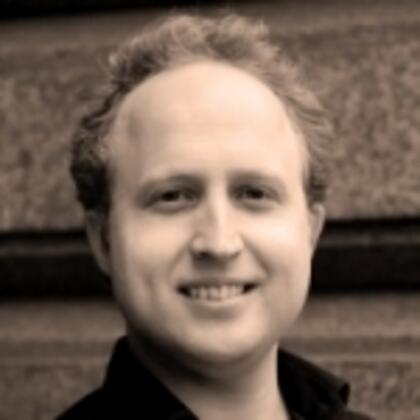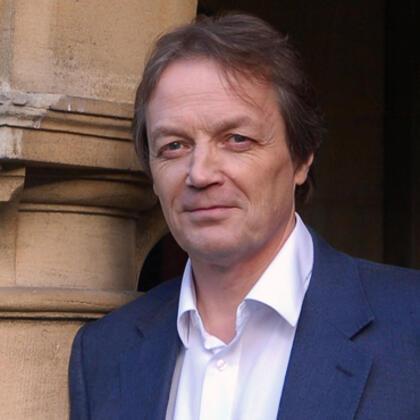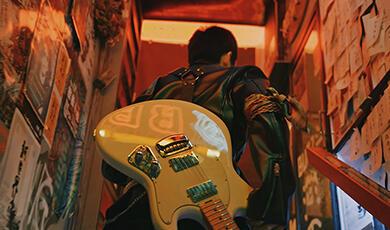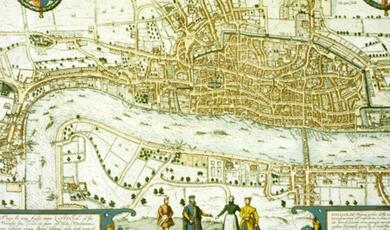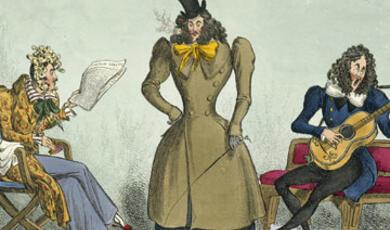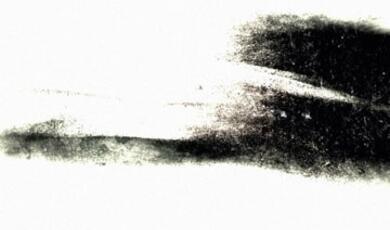Medieval Music: The Stations of the Breath
Share
- Details
- Text
- Audio
- Downloads
- Extra Reading
At the heart of virtually all the medieval music that survives, is the human voice. This is an ancient heritage. The early Christians under the Roman Empire believed themselves to be engaged in a pilgrimage through a transitory world, where they were strangers, to their true home and an eternal liturgy ‘where my servants shall sing for joy of heart’, as St John the Divine says in Revelation. But why have singing in worship? What was to be gained, in the early Church and in its medieval descendant, by having a choir singing snippets of the Scripture, often extracted from their original context and sewn together in new patterns? We shall find that the answer lies in the breathing body.
Download Text
08 October 2015
The Stations of Breath
Professor Christopher Page
Ladies and gentlemen, welcome to the first lecture in my second series as Gresham Professor of Music. My theme for this year is music imagination and experience in the medieval world, and I shall be much concerned with singing and the use of the voice, especially in worship. So for this first lecture, as seems appropriate, I will reach down to some of the foundational ideas of the Middle Ages, some of them biblical, which means taking you down into the crypt, so to speak, below the cathedral, where many things, some of them very old, some of them perhaps generally forgotten, lie in the half light.
I begin with a very brief piece of plainsong. It is indeed very brief, but it will make my point nonetheless. I take it from a medieval service, The Feast of the Visitation of the Blessed Virgin Mary, where it forms an antiphon at Second Vespers. Beatam me dicent omnes: 'Let all generations call me blessed, because God has regarded his handmaiden, Alleluia'.
Performance: Beatam me dicent omnes
Plainsong like that forms the oldest recoverable corpus of Western music, much of the repertoire dating from the later eighth and ninth centuries. That one is at least eight hundred years old. Yet although that may make it seem remote, I would like to suggest that plainsong is actually part of your musical DNA. It lies within you, as it lies within me, because it is the prime (in the sense of the most ancient) source of musical experience in the Occident. Until the Reformation, and in many places long after, the ears of virtually all trained musicians, including the great names of Renaissance polyphony such as Binchois, Du Fay and Josquin, were saturated with the Latin plainsong that they sang and studied. The music also laid the groundwork for their art of composition. How long should a musical phrase extend before there is a pause for breath? How should a melody balance stepwise movement and leaps? Plainsong offered persuasive answers to these questions that were essentially the same throughout Western Europe.
Listen to the antiphon once more, and you will hear how beautifully lucid and balanced it appears. We cannot know how it was sung in the Middle-Ages, but that does not affect the fact that the musical language is both intelligible and satisfying. The melodic gestures at the ends of phrases leave you in no doubt that you have reached a partial and at last a final close. Quite simply, it makes sense:
Performance: Beatam me dicent omnes
The question of how medieval singers experienced a chant like that is partly a matter of memory and written record. In my experience, music lovers and the public are always keen to hear when musical notation first appeared in the West, and why. The short answer is that forms of practical notation for plainsong were known in some parts of Europe by 900, and in a wide area from he bleak plateau of Laon in northern France to the Alpine monastery of St. Gallen. Some of you may be thinking that it is obvious why it was useful to have musical notation; surely a score allows music of achieved excellence or usefulness to be stored and retrieved so that it may be used or enjoyed repeatedly? Yet there can be no simple assessment of how or why a need for notation arose amongst early medieval singers. Any system of writing reveals a certain amount and no more, defined by the shortfalls that users believe can be adequately supplied by personal contact or by supplementary knowledge. In the monasteries and churches of the Middle-Ages, the opportunities for gaining supplementary knowledge through personal contact, and very sustained exposure to the music – perhaps during a lifetime – were many.
Other encounters were less orthodox. Let me introduce you to a young ad pious woman of northern France, Asceline of Boulaincourt, who lived in the second half of the 12 th century. She was a novice in a nunnery. Here is what her biographer has to say: 'One day when she was twelve, and the sisters had left the curtilage, having gone to a certain house for the making of candles, a certain young cleric, a scribe, like a follower of the devil, whose prey was chosen, greatly desiring her because she was beautiful, and seeking an opportunity to speak with her alone, said to her that, if she agreed, he would teach her letters, musical notation and chant (notas et cantum doceat). Since he could not speak to her for very long, he sends [literally 'he will send'] letters and verses written in French; he accosted her a third time, and proclaimed his love. She, at length, with the simplicity of a dove, said: 'if you change your habit and choose rather to become a canon, I will love you'.
As you can see, the need to learn chant could give rise to many different kinds of opportunity, and danger. And when I say 'learn chant' I mean learn by heart. Well into the 15th century, singers in even the greatest churches of the Christian West sang many of their chants from memory. A notated book, such as a gradual, was principally a library resource, perhaps used for checking details in any case of dispute. A chant was therefore one element in the sensual, intellectual and spiritual experience of the surrounding liturgical event. That complex experience shaped thousands (perhaps million) of lives for centuries. From Cadiz in Western Spain to Esztergom in Hungary, from Trondheim to Norway to the verge of the kingdom of Granada, monks, nuns, clergy, canons and friars by 1300 were gathering in churches, several times a day, to sing their plainsong. The singers breathed as one and resumed, after each pause, as one. That is how plainsong works; it takes a group of human beings whose breathing is disordered and imposes a single pattern of respiration. Illuminated initials in medieval Psalters, books of the psalms, often show singers standing very close to one other, often maintaining a light physical contact as if to ensure that the circuit of spiritual and musical energy flowing between their bodies remains unbroken. Day by day, and year by year, they reinforced the associations in their minds between the sounds of that music and ceremonies that could be highly charged. A chant was a feeling in the throat, a sensation in the ear and a penumbra of memories created during years of repetition. As the community worked its way through the liturgical calendar of their house, familiar items of chant came and went with the lengthening and shortening of days, and with the arrival of seasonal fruits on the common table. The first notations are the deposit of a form of life.
If you attend a Christian service today, of almost any kind, and even if only out of curiosity, a question will perhaps form in your mind. If you could be transported back to the Middle Ages, when liturgies were very much more elaborate with a great many plainsongs, some of them choral and some of them elaborate solos, when there were brightly coloured and embroidered vestments, processions, movements onto the loft for special readings or chants and so on, you would be made yet more forcefully aware of that same question. Why is there so much music, and why does worship need the performance of isolated snippets from the bible, by a trained choir with no actual sacerdotal function – no holy task– to perform? Such things have often been asked, especially by clerics (and such ministers still exist) who deem that music in general, and singers in particular, are an obstruction to the conduct of a service. They create problems of discipline, they may have to be paid and the better they fulfil their role the more members of the congregation are encouraged to listen rather than to pray. Given the strength of feeling that plainsong could induce – this will be the subject of a later lecture in this series on music and tears – it is not surprising that medieval chronicles, lives of saints and a wealth of other documents often celebrate particular plainsongs that the writer admired. The language of assessment is rich and varied. Chants are described as 'sweet sounding ( dulcisonas), 'most beautiful' (pulcherrimos), composed with 'correct music' (regulari melodia) or made with 'choice invention' (elegans ingenium). The expressive power of such language for contemporaries should not be underestimated.
I would like you now to hear a plainsong that I have treasured ever since I first encountered it. It lies precisely at the point where music seems in danger of calling so much attention to itself that prayerfulness is lost or endangered. It is a responsory in honour of Pope Gregory the Great, who died in 604, beginning Sanctus papa Gregorius. The composer, you may be surprised to hear, was a pope himself, Leo IX, who died in 1054. This chant is designed to form the climax to a set of responsories, and you will hear how the music works towards what I can only describe as an ecstatic peal of bells.
Performance: Sanctus papa Gregorius
As that chant seems almost to leave words behind at one point, so you might think it aspires to leave the body behind to reach the angelic state: a celestial, disembodied voice of pure praise, not sullied by the muddy garb of flesh. That would be precisely the wrong way to ponder and to hear that chant. The cue to the direction I wish to pursue is in my title, 'the stations of the breath', which alludes to a bodily function, - to that muddy garb of flesh – without which there is no song, and indeed no life. I have taken it from the fine poem by Dylan Thomas on the death of a child in the London Blitz:
I shall not murder
The mankind of her going with a grave truth
Nor blaspheme down the stations of the breath
With any further
Elegy of innocence and youth.
The allusion, of course, is to the Stations of the Cross. The fundamental answer I wish to give to the question of why the singing voice has always been so important in Christian tradition, never more so than in the Middle Ages, is that the faith, in all its institutional forms, has always acknowledged that singing is an embodied practice: something deeply engaged with the pleasures, the pains, the mortality and finally the immortality of the human, breathing body which (such is the doctrine) God shared with mankind in the person of Christ from birth to childhood to manhood: the 'stations of the breath'.
For the moment, I would like to move forward with the work of a poet with a more secure place in the literary tradition of the West than Dylan Thomas. I mean the Roman poet Virgil and his epic, The Aeneid. Written some twenty years or so before the birth of Christ, this magnificent poem with its most profound understanding of love, loss, triumph and cruelty recounts how Rome was founded by an exile from a city on what is now the coast of Western Turkey. After the sack of that city, which is of course Troy, Aeneas sails through the Mediterranean, driven by his destiny to bring his gods to Latium. He lingers in Carthage, an old Phoenician city whose site now lies in Tunisia, where his affair with Queen Dido gives rise to one of the world's great stories of tragic love. In Book II of the epic, Aeneas tells Dido how he looked for Creusa, his wife, amidst the general panic and destruction of the sack of Troy. All around him columns cracked in the flames and collapsed. He became desperate. As he says in Virgil's Latin, iterumque iterumque vocavi: 'I called out (for her) again and again'. Suddenly, Aeneas sees his wife, walking towards him amidst the chaos; but she is somehow taller. With mingled grief and horror, unable to speak, he realizes that she has been killed, and that she is now a shade on the way to the land of eternal half-light and cold. She speaks and tells him of his great destiny, of which her death forms a part, with words as moving as any I know in poetry:
'What help is there in this mad passion of grief, sweet my husband? Not without divine influence does this come to pass'.
In the 17 th century translation of John Dryden, Aeneas continues:
I strove to speak: but horror tied my tongue;
And thrice about her neck my arms I flung,
And, thrice deceiv'd, on vain embraces hung.
Light as an empty dream at break of day…
Aeneas tries to embrace Creusa three times and meets only thin air.
Now I would like to turn to a different text: one that is not very much younger than the Aeneid. Written in Greek, it is sometimes rapturously mystical, while at other times it gives the impression of being sharply historical. A man has been killed, indeed executed, and his friends have gathered in the wake of their horror and disappointment:
Then the same day at evening, being the first day of the week, when the doors were shut came Jesus and stood in the midst, and saith unto them, Peace be unto you.
And after eight days again his disciples were within, and Thomas with them: then came Jesus, the doors being shut, and stood in the midst, and said, Peace be unto you.
Then saith he to Thomas, reach hither thy finger, and behold my hands; and reach hither thy hand, and thrust it into my side: and be not faithless, but believing.
It was not a rare thing in the ancient world for someone to see a revenant from the realm of the dead as Aeneas sees his murdered wife. The dead often returned to warn, to complain or just to be mischievous. The difference is that those who came back from the grave only appeared to have physical bodies; that is why Aeneas embraces his wife as an 'empty dream'. It was quite another matter when doubting Thomas thrust his hands into the wounds of Christ, for his probing fingers met flesh and bone. The form of Christianity which eventually triumphed over its many early competitors insisted that Christ returned from the tomb in some form of his former physical state, infinitely harder to comprehend, but still physical. That was the Christian claim, as it still is, and in the ancient world no devotee of Isis or Aphrodite would have understood it.
You do not have to be a theologian to see that the gospel writers' answer to the question of how Jesus was in the body after his death is far from clear, and that the relation of the Christian faith to the notion of the embodied is therefore rich and conflicting. The gospels of Luke and John shimmer with different understandings of the Lord's physical state, while in the redacted ending to Mark Jesus appears 'in a different form' to disciples, having already appeared to Mary. In Luke he suddenly appears among the community in Jerusalem and insists that he is made of flesh and blood and is not a spirit or pneuma. He even asks for food.
Reflection on these matters soon became more elaborate and systematic, notably in the earliest sustained discussion of bodily resurrection by a Western Father, Tertullian, writing in Carthage. It is no part of Tertullian's purpose in his treatise On the Resurrection or the Body to correct those who hoped the dead would one day 'rise up from the earth possessing the same bodies as before' (a belief pagans held in contempt). Tertullian, whatever his reputation as a philosopher amongst his fellow Carthaginians, is quite prepared to endorse that hope; if Christians are to rise after the example of Christ, who rose in the flesh, Tertullian argues, then they must ascend in the body themselves. The various members of the human body will be 'delivered from their lower functions' in the blessed state, for eating, drinking, coitus and the need for labour will pass away in heaven.
Now we reach the heart of the matter. Tertullian insists that while the baser functions of the body will pass away in the blessed state, the higher ones will remain. Addressing both his fellow Christians and pagan doubters, he poses a simple question: 'You have been given a mouth for eating and for drinking; why not rather for speaking and praising God?' This offers a profound way of viewing a Christian purpose for hymnody: vocal praise of God is a higher faculty of the resurrected and restored body that will persist in Paradise when other, lower functions have become unnecessary and are therefore foregone.
I have not yet finished with that fine chant you heard earlier, Sanctus papa Gregorius, and I am going to ask Tim to sing it for us again:
Performance: Sanctus papa Gregorius
I am sure Tim would agree that, in the performance of an elaborate and demanding chant like that the control of breath is fundamental. Being so elaborate, and taking the chant so high in the voice, it requires virtuosic management of breath. (The little marks that scribes used to put in during the Middle Ages, as a sign that singers should pause between musical phrases, were wisely called suspiria, or breaths). So we find ourselves again with the breathing and feeling body. Indeed I would like to suggest that we have travelled back to the first pages of Genesis where everything begins. 'And the Lord God formed man from the dust of the earth: and breathed into his face the breath of life…' What is it that turns Adam and Eve, their flesh compounded from mud, into the loving and upright couple celebrated by John Milton in Paradise Lost: the man and woman who came to the door of their dwelling:
and began
Their Orisons, each Morning duly paid
In various style, for neither various style
Nor holy rapture wanted they to praise
Their Maker, in fit strains pronounc't or sung
Unmeditated…
It is the divine breath that animates them as they sing their hymn of praise. As the passage from Genesis says: the Almighty breathed into Adam's face 'the breath of life'. Without that breath, they would be as dead, and as cold to the touch, as a ceramic jar, also made from mud and clay. In the Gospel according to Saint John, where the resurrected Christ appears before the disciples and shows his wounds, he 'breathes' on the disciples and says: 'Receive the Holy Spirit'. Jesus breathes. Spirit, in the most mystical sense, the Holy Ghost, is here associated with spirit in the most literal sense, the breath of a living body. In Latin, as in Greek and Hebrew, the words for 'spirit' and for 'breath' are the same. The reason why the early Christians valued singing in worship was a form of resurrection theology favoured by that wing of Christian opinion, destined to triumph, that believed in a truly physical Christ.
The hymnody of early Christian gatherings was part of the general clamour rising heavenwards from cultic assemblies in this eastern-Mediterranean context and probably had much in common with the ritual singing of other religions. Indeed the debt of the early Christians to the rich song culture of the eastern Mediterranean can still be heard in much of the music plainsong known to the Middle-Ages. Let me show you what I mean.
Performance: Mitte manum tuam
You can hear, in that chant, a fossilised structure of call and response, the text is the call and the Alleluia refrain is the response. Here it is again:
Performance: Mitte manum tuam
Approaching now the final stretch, I return to the question of notation. A great deal of time in the monastic or cathedral day was spent learning plainsong by heart, at some cost to other studies and devotions. In 838, Agobard of Lyons insisted that 'too many singers study from earliest youth until the hoariness of old age' to learn their chants, so that they can be numbered among the cantors; as a result they neglect their 'spiritual studies, that is to say readings and the study of divine eloquence'. There are other writers who say much the same thing.
Truiden Rudolf bore a great labour in teaching them [the few boys in the monastic school of Sint-Truiden after the great fire of 1086] since he did not know how to speak to them in a Germanic tongue, and some of the boys knew so little as yet that they could not understand him in their native Low German, nor in Latin, nor, if I may say so, in a Walloonish way…. He instructed them in the art of music according to Guido, and was the first to introduce that art into our cloister. To the amazement of the senior monks he made them sing straight away, only by looking, with art and yet with a silent master, what they had never learned by hearing (VIII, 4).
He made a graduale with his own hands…and notated it with music, syllable by syllable, if I may so put it, first debating the usage of the old graduales with the seniors'. But when, on account of a bad abuse and corruption of the chant, he could in no wise conform it to correct practice in many places, and could not notate it according to art (except what accorded with regular and true-sounding principle), and when he did not readily wish to lose accord with the usage of the church, then, as I have said, he only troubled himself with a wondrous and indescribable effort in vain, because a true principle cannot accommodate a false usage, but he proceeded in this way, not allowing himself to pass by anything in the use of that church which could be sung in some part of the monochord (VIII, 5).
I would like to introduce you to one of them, and in the process I am going to give the perfect answer should you ever take part in a pub quiz and your team is asked: who invented musical notation. It is not an excessive simplification to say that the system of writing notes on stave lines, that we now employ, was invented from an existing bundle of graphic techniques by an Italian named Guido not long after the year 1000. There are many copies of a letter in which Guido explains how he took his new system, using notes on lines with clefs, to Rome and showed it to John XIX (Pope from 1024 to 1032) who did Guido the great honour of actually singing an antiphon from it, thus proving its efficacy. Guido insists in the letter that his new system will help novices to learn their plainsong more quickly, contracting a lifetime's work into just two years. Yet Guido is not content to say only that his new method will allow a lifetime of study to be accomplished in twenty-four months, although that is already saying a great deal; he also maintains that monks and clergy will now have more time for prayer, for the recitation of psalms, and for nocturnal vigils they will be able to keep cum puritate, 'with purity'.
That simple expression distils an astonishing amount of the political and ecclesiastical history of the central Middle-Ages. The purity of monks and especially of clergy, meaning freedom from the contagion of money, blood and or sexual contact, was a matter of intense concern in the 11 th century west. There is therefore a wealth of material at hand to interpret what Guido means by expecting monks and clergy to attend their vigils cum puritate now that they will be able to complete their training in plainsong so much more quickly. His new notation will give them more time to enhance and deepen the quality of their spiritual life; they will have the means, if they are prepared to make the effort, to be cleansed, by prayer and wakefulness, from the troubling dreams and phantsmata that sully the male body in sleep. His new notation, which we may thank for the Passions of Bach and the late quartets of Beethoven, was designed to help the devout purify their bodies from taint and approach the blessedness of heaven that, all being well, awaited them for their years of service in the choirstalls.
© Professor Christopher Page, 2015
This event was on Thu, 08 Oct 2015
Support Gresham
Gresham College has offered an outstanding education to the public free of charge for over 400 years. Today, Gresham College plays an important role in fostering a love of learning and a greater understanding of ourselves and the world around us. Your donation will help to widen our reach and to broaden our audience, allowing more people to benefit from a high-quality education from some of the brightest minds.


 Login
Login

